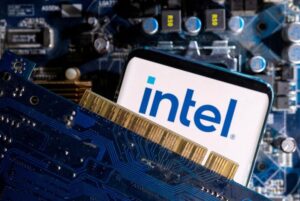Intel Faces a Pivotal Moment as TSMC and Broadcom Eye Strategic Moves
Recent developments indicate a significant shift in the competitive landscape of the semiconductor industry. Taiwan Semiconductor Manufacturing Co (TSMC) and Broadcom are reportedly exploring potential deals that could lead to a breakup of Intel, a longtime giant in the chip market. Both companies are assessing parts of Intel’s vast business to strategize their next moves, potentially altering the dynamics of the tech industry as we know it.
Broadcom’s Interest in Chip Design
Broadcom has set its sights on Intel’s chip design and marketing unit, which has historically been a cornerstone of Intel’s success. However, this segment has grappled with intense rivalry from Advanced Micro Devices (AMD) in the personal computer and data center markets. The recent rise of artificial intelligence (AI) chips, particularly those offered by Nvidia, has further complicated Intel’s situation, leading to diminished demand for its traditional products.
Intel’s Client Computing Group, which includes its Core series and Atom processors, has seen a dip in revenue—$48.95 billion in 2024, only a slight increase year-over-year but significantly down from 2022 figures. The transition of spending by major cloud companies towards AI chips underscores a broader trend that could disadvantage Intel.
Intel Foundry’s Ambitions
In a bid to adapt, Intel has structured its manufacturing and product development into two distinct divisions, including the Intel Foundry. This division aims to not only produce chips for Intel but also offer custom chip-making services to external clients. With 10 manufacturing sites globally, the foundry has recently attracted interest from other industry leaders, including Nvidia and Broadcom, who are conducting manufacturing tests with Intel.
Despite these efforts, Intel’s foundry business faced challenges, including setbacks from earlier tests with Broadcom that were unsuccessful. Nevertheless, the potential endorsement from major companies could significantly elevate Intel’s contract manufacturing profile, introducing a much-needed revenue boost.
A Delayed Vision: Transformative Challenges
Intel’s ambitious plans, including a $28 billion chip fabrication plant in Ohio, have hit roadblocks, with projects in Germany and Poland also facing delays. A reported $13.41 billion operating loss in 2024 has led to tightening budgets and a sharp focus on prioritizing critical projects, with hopes to achieve break-even by around 2027.
Revenue from this segment amounted to $17.5 billion, reflecting a $1.4 billion decrease from the previous year—indicative of the severe challenges Intel faces as it seeks to reclaim its position in a rapidly evolving market.
Broader Implications for Intel
The diversification within Intel’s business sectors highlights both opportunity and risk. The segment labeled "All Other" encompasses ventures like Altera and Mobileye Global, both vital to Intel’s diversification strategy. Recent reports indicate that Silver Lake is in discussions to acquire a majority stake in Altera, suggesting significant shifts in the ownership landscape of Intel’s subsidiary businesses. Despite this, Intel has reaffirmed its commitment to its majority stake in Mobileye Global, a leader in self-driving technology.
Revenue from this sector also declined sharply, by about 32% to $3.82 billion in 2024. This decline raises questions about Intel’s long-term growth prospects and the viability of its existing strategies in an increasingly competitive and challenging environment.
Conclusion
The current situation surrounding Intel is more than a corporate restructuring; it’s a reflection of a semiconductor industry at a crossroads. As companies like TSMC and Broadcom consider strategic moves that could fracture Intel’s once-dominant market position, the landscape is ripe with opportunities and threats alike.
Investors should keep a close eye on how these developments unfold, not just from Intel’s perspective but also how they resonate throughout the entire tech ecosystem. This is a crucial moment for Intel, and the choices made today will shape the company and the industry for years to come.
For those engaged in finance and investment, understanding these intricacies is essential in navigating the rapidly changing semiconductor market. Stay informed with Extreme Investor Network for insights and analysis on these pivotal developments.

